I’ve been browsing Decathlon’s Hiking Collection and spent a lot of time thinking about what I’d pack this season. I picked the gear that I believe makes the biggest difference in comfort and safety.
Thank you for reading this post, don't forget to subscribe!Autumn is my favorite hiking season. The air feels cleaner, the light is soft, and the trails smell of fallen leaves and damp earth. But it’s also the most unpredictable time to be outdoors. Mornings can start frosty, then turn warm; paths get slick with mud, and rain often arrives out of nowhere.
Below, I’ll share my thoughts on each category and the specific products that caught my attention.
1. Hiking Boots and Shoes
For autumn hiking, boots come first. If your feet aren’t dry or supported, the rest of your gear won’t save your hike. Wet leaves, muddy slopes, and hidden tree roots all call for a solid sole and ankle support.
From Decathlon’s hiking range, the Quechua MH500 Mid Waterproof Hiking Boots deserve a closer look. I find them ideal for day hikes on mountain trails where a bit of extra support makes a real difference.

Their mid-height design feels secure around the ankle, which helps on uneven paths or when carrying a loaded pack. I also like knowing that the rubber toe bumper protects my feet from rocks or roots that often stick out on the trail.
For shorter trails…
For easier, shorter trails, I’d consider the Quechua MH100 Waterproof Hiking Shoes. They’re low-cut but still have a waterproof lining and good cushioning.

Personally, I’d choose the mid-cut MH500s for autumn because the extra ankle protection gives me more confidence on uneven ground.
One thing I think about when buying hiking footwear is drying time. If I get caught in a heavy rain, I want boots that dry overnight, and the MH500s usually do better than old leather boots I’ve owned. The outsole uses Decathlon’s Outdoor Contact technology with 5 mm lugs that grip well on both damp soil and loose gravel. They’re fairly lightweight—about 490 g per shoe—so they don’t feel bulky after a few hours of walking. Inside, the thick EVA foam midsole softens the impact on rough ground, and the waterproof membrane keeps feet dry in rain or wet grass for a good part of the day.

What stands out to me is the balance between comfort and durability. The MH500s are tough enough for regular hiking but don’t feel stiff right out of the box. If you pair them with good moisture-wicking socks and remember to care for the leather and waterproofing over time, these boots should last through many autumn seasons. For anyone looking to upgrade from low-cut trail shoes to something with more ankle support and weather protection, these boots feel like a practical step up.
2. Moisture-Wicking Base Layers
Autumn hikes often start chilly and warm up fast, so a good base layer makes a big difference. I try to avoid cotton because once it’s damp, it stays damp and feels clammy when the breeze picks up. Instead, I go for synthetic or merino wool shirts that pull moisture away from the skin and dry quickly.
One of my favourites from Decathlon is the Men’s Long-Sleeve Merino Wool Hiking T-Shirt – Travel 500. It’s soft against the skin and surprisingly good at controlling odours, so I don’t feel like I need to pack a fresh shirt for every day out. The blend of 70% merino wool and 30% acrylic means it dries faster than pure wool and lasts longer. I find it perfect for brisk morning starts when I need a bit of warmth that won’t feel sweaty once I start climbing.

For warmer or sunnier days, I like the MH100 Synthetic Hiking T-Shirt because it wicks sweat quickly and dries in no time. I often keep a spare dry shirt in a small dry sack inside my pack; swapping into it at lunch feels like a small luxury that keeps me more comfortable for the rest of the hike. These details—softness, quick drying, and odour control—make base layers worth paying attention to, especially in autumn when conditions change quickly.

3. Mid-Layer Insulation
I think of the mid-layer as my “comfort zone” for autumn hikes. If it’s too thin, I get chilled when I stop to rest; if it’s too bulky, I start sweating halfway up a climb. Finding that balance is what makes hiking in variable autumn weather more enjoyable.
For most early autumn days, I like the Forclaz MT 100 Hooded Down Hiking Jacket. It’s lightweight, breathable, and adds just enough warmth to keep the morning chill away without making me overheat on the uphill stretches.

I often keep it in my pack even if I don’t expect to wear it—it doubles as a pillow for a quick break or as an extra layer when sitting on cool rocks for lunch. I’ve found Decathlon’s fleeces to be affordable yet durable, which makes it easier to justify carrying one everywhere.
When the forecast calls for colder evenings or higher-altitude hikes, I bring a down layer for extra insulation. The Forclaz MT500 Hooded Down Jacket is one I reach for. Filled with 90% down and 10% feather with a fill power of 800 cuin, it’s surprisingly warm for such a compact jacket—comfortable between 0°C and –10°C when layered properly.

I like how it compresses into its own storage bag, saving space in my backpack. The water-repellent outer fabric helps shrug off light moisture, but I’d still pair it with a waterproof shell in wet conditions. For me, the MT500 strikes a great balance between warmth, weight, and packability, which makes it a reliable backup for unpredictable autumn mountain weather.

4. Waterproof & Windproof Outer Shell
If I could give just one piece of advice for autumn hikers, it’s this: never skip a shell jacket. Weather shifts fast, and a sudden gust of cold wind or drizzle can ruin an otherwise perfect day.
The Quechua MH500 Waterproof Hiking Jacket caught my eye for its balance of weight, breathability, and protection. It has sealed seams, a hood that cinches well, and pit zips—ventilation that makes a real difference when you’re hiking uphill under light rain.

I also like that Decathlon makes packable rain ponchos—for example, the Forclaz Hiking Poncho. It’s not fancy, but for quick showers, it’s lightweight and can even cover a backpack.

I keep my shell in the top compartment of my pack. I’ve been caught enough times by surprise rain to know that digging for it at the bottom isn’t fun.
5. Hiking Poles
I’ve learned over the years that hiking poles aren’t just for steep mountain trails—they make a difference on almost any hike. A good pole saves my knees on descents, helps with balance on rocky or muddy ground, and keeps me steadier when carrying a heavy pack. In autumn, when trails can be slick with fallen leaves or damp from rain, I appreciate the extra stability even more.
For those just starting out or looking for something simple and budget-friendly, the Forclaz MT100 Hiking Pole is a great pick. It’s as straightforward as it gets: a push-pin adjustment system that’s quick to set up—just press the pin, slide it to the right length, and it’s ready to go.

It adjusts between 105 cm and 120 cm and collapses down to about 55 cm, so it’s easy to strap to a backpack. I like its light 200 g weight and the foam handle, which feels comfortable even after a long climb. At just around $9 per pole, it’s an excellent entry-level option or a reliable spare to keep in the car.
For rougher trails…
If you hike more often or tackle rougher trails, I’d lean toward the Forclaz MT500 Adjustable Hiking Pole. It’s sturdier, with a 7075-T6 aluminum shaft and a tungsten tip for better durability on rocky ground. The combination of an external lock and automatic push-pin makes it easy to adjust quickly—even with gloves on.

It extends up to 130 cm, giving more versatility for uphill and downhill sections, and the dense foam grip runs long down the shaft so I can hold it lower when climbing steep ground without having to readjust the length. At 240 g per pole, it’s still lightweight but feels more robust.
Both poles are sold individually, which I actually appreciate—sometimes I only want one pole for light hikes or to save weight, but when I need two, I can pair them. I also like that Decathlon offers spare parts and accessories for these poles, which means I can replace baskets or tips without buying a whole new set.
My personal routine is to use poles on nearly every autumn hike because the weather can make trails unpredictable. The MT100 is perfect for casual hikes or as a backup, while the MT500 feels like a good investment if you’re regularly on uneven or steep terrain. Either way, a sturdy hiking pole makes my steps feel more confident, especially on wet leaves or loose gravel.
6. Backpacks
A good backpack makes all the difference on the trail—whether you’re carrying just the essentials for a half-day outing or gear for a longer autumn hike. Quechua has two standout models that balance comfort, storage, and durability.
Quechua MH500 Hiking Backpack – 38 L
The MH500 38 L is built for more demanding day hikes or light weekend treks. Its adjustable frame and ventilated mesh back let air circulate, which helps keep your back dry even on warmer fall days or uphill climbs. The padded shoulder straps and supportive hip belt distribute weight evenly, reducing fatigue and pressure points.

Storage highlights:
- 1 large main compartment with top-lid access
- 2 zipped belt pockets for snacks or small gear
- 1 zipped front pocket and a stretch front sleeve for a fleece or jacket
- 2 side bottle holders
- 1 internal hydration-bladder sleeve
- Dedicated pole-holder attachments
- Lid (“hat”) with 2 additional pockets, including a key clip
At 62 × 30 × 31 cm (24.4 × 11.8 × 12.2 in), it’s spacious without feeling bulky. The water-repellent fabric sheds light rain, though for heavy showers you’ll want to add a 20-40 L rain cover. Quechua backs it with a 10-year warranty, reflecting the strong zippers, reinforced seams, and abrasion-resistant materials.
For longer day hikes or when you carry extra layers and lunch for the family, the MH500 38 L strikes a great balance between ventilation, comfort, and organized storage.
Quechua NH100 Hiking Backpack – 30 L
The Quechua NH100 30 L is a lightweight and affordable choice for shorter hikes on gentle terrain. It’s simple but well-organized, with padded shoulder straps and back pads for ventilation, plus chest and stomach straps to stabilize the load.

Storage highlights:
- 1 main compartment with an internal divider that fits a 15-inch laptop or tablet
- 3 zipped pockets for smaller items
- 2 bottle holders and a blanket carrier
- Elastic cord on the front to stow or dry a jacket
- Side compression straps that help balance your load
Its compact size (50 × 26 × 20 cm / 20 × 10 × 8 in) makes it ideal for a half-day nature walk or autumn foliage outing. Like the MH500, it’s water-repellent but not fully waterproof, so a rain cover is recommended for extended wet weather. This model is also covered by a 10-year warranty for durability and abrasion resistance.
If you’re planning shorter hikes or want a budget-friendly pack for casual outdoor days, the NH100 30 L is a reliable, no-fuss option.
7. Headwear, Gloves, and Neckwear
Head and hands often get ignored until they’re uncomfortably cold. I learned to pack these small items early on.
I like the Simond Merino Beanie because it’s thin enough to wear under a hood and still keeps my head warm.

For hands, I’d pick Mid-Season Hiking Gloves, MT 500 for using maps or a phone without freezing my fingers.
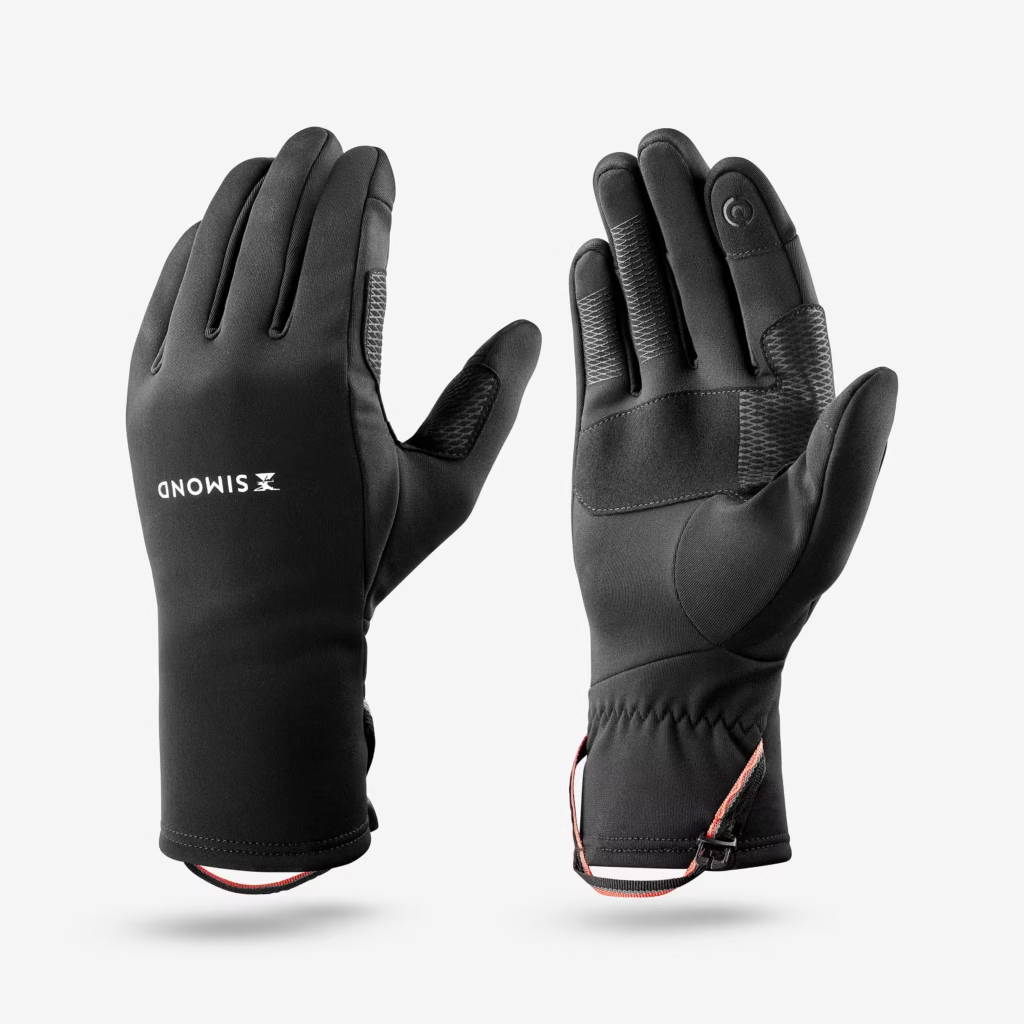
A multi-purpose neck gaiter is one of those small things I never leave out. It blocks chilly air on climbs and doubles as ear protection when the wind picks up.
8. Gaiters
I didn’t think I needed gaiters until I started walking through wet grass in the early mornings.
The Simond Hiking Gaiters – MT 500 High are lightweight and keep water, mud, and bits of debris from sneaking into boots. I also find them useful on muddy trails after autumn rains—they save me from washing socks every time.
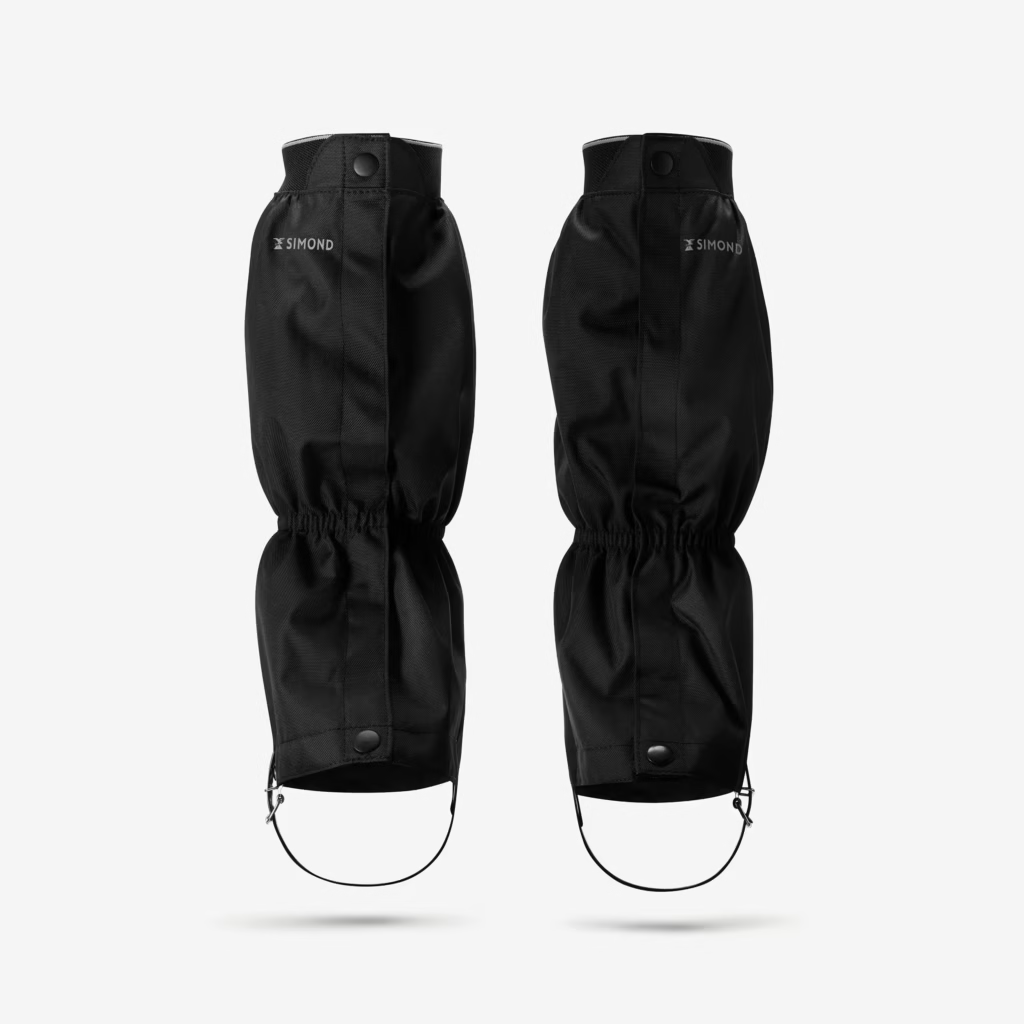
9. Navigation & Safety Gear
Shorter days mean you can lose daylight faster than expected. I always keep a Simond Rechargeable Hiking Headlamp – HL 500. It’s bright, weather-resistant, and charges easily.
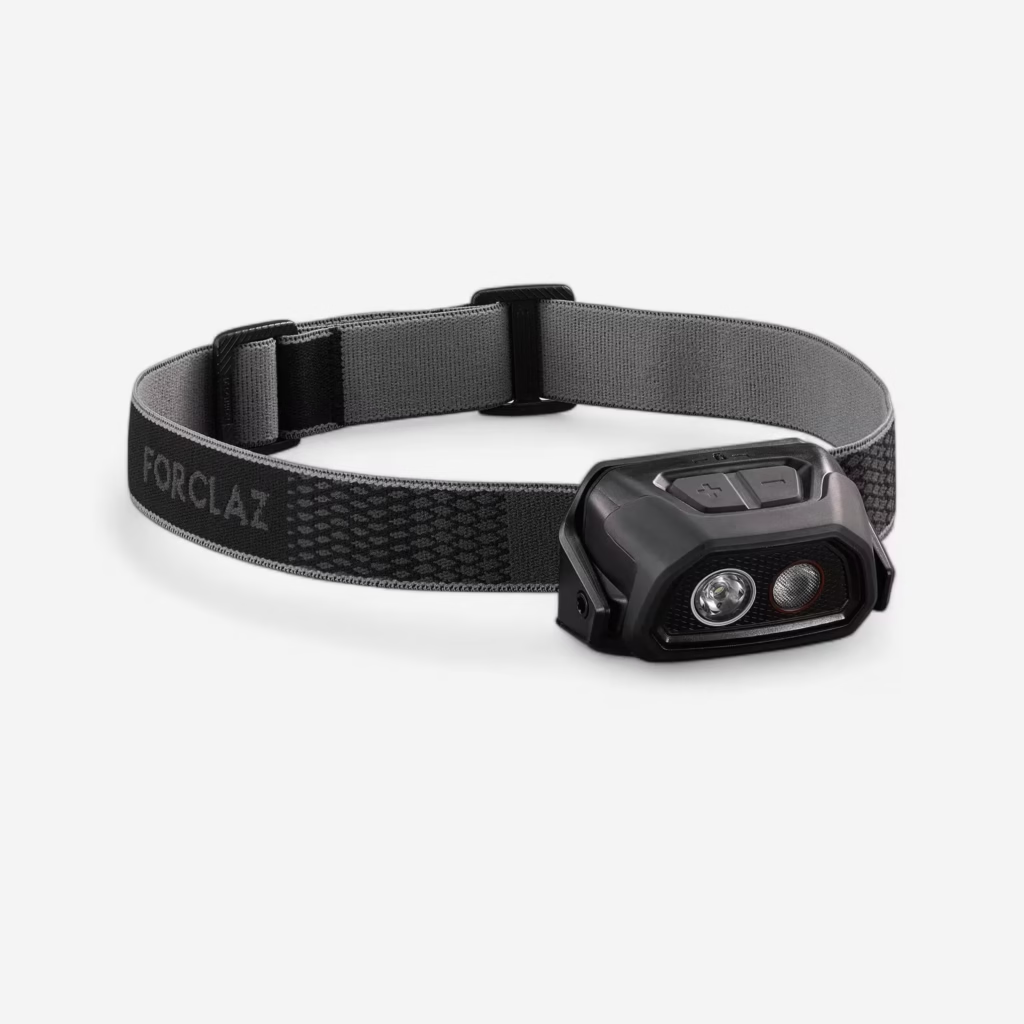
A basic compass and an emergency whistle don’t take much space but can be lifesavers. I think every hiker should carry a small first-aid kit like Decathlon’s Trek 100—blisters, cuts, or scrapes happen more often than we admit.
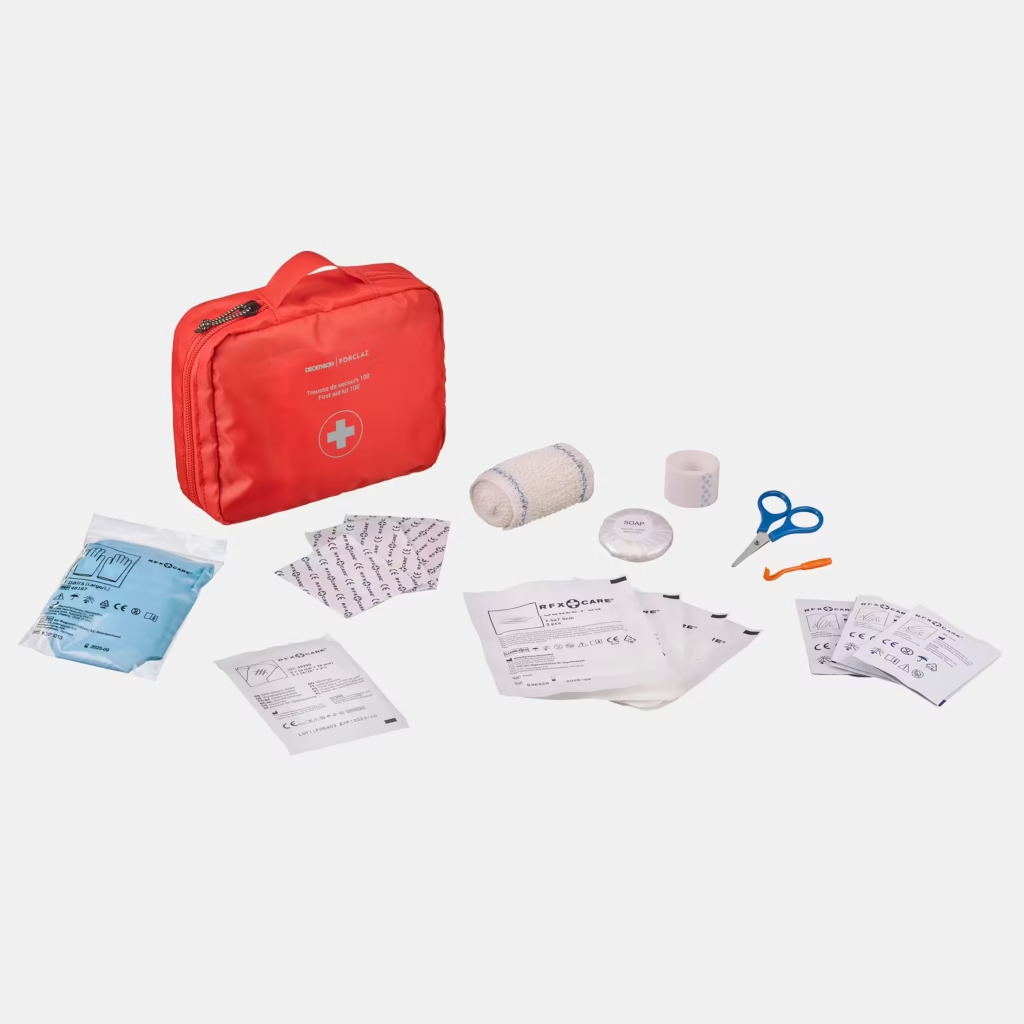
10. Hydration and Food
Even in cool weather, I drink a lot on hikes. Decathlon’s 2L Hydration Bladder fits nicely into most daypacks and makes sipping while walking easy.
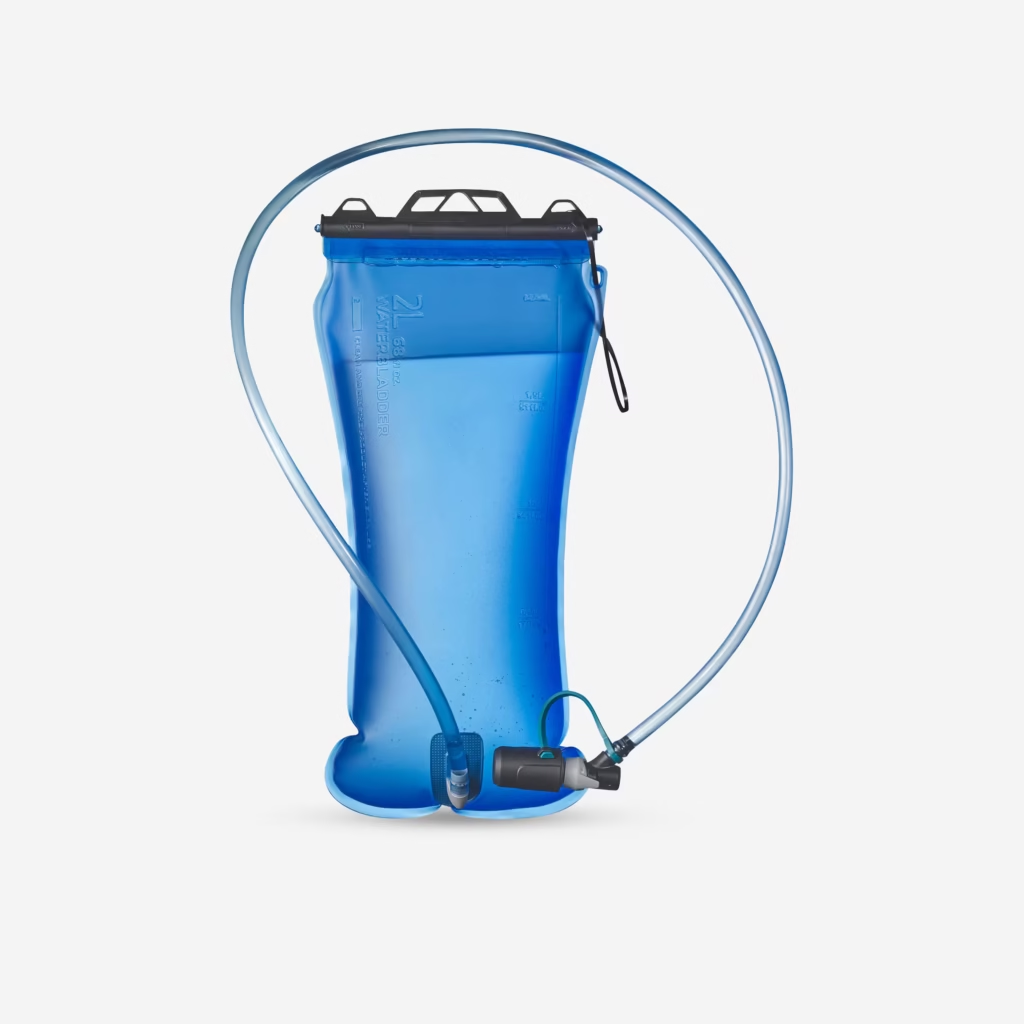
For something warm, the Quechua Stainless Steel Insulated Flask is a favorite of mine. There’s nothing better than a sip of hot tea or soup on a chilly autumn afternoon halfway up a ridge.
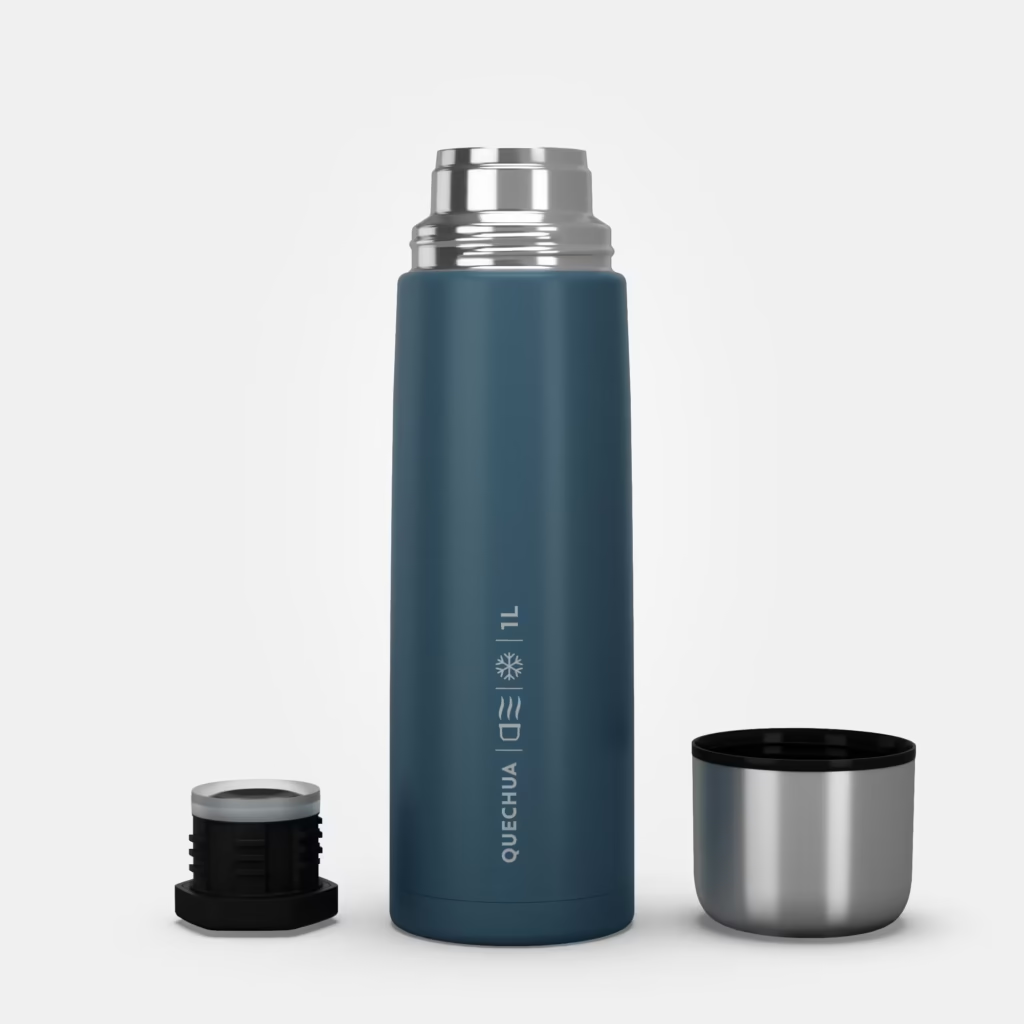
11. Accessories that Make a Difference
A few small extras can make the outdoors feel much more organized:
- Dry bags keep spare clothes and electronics safe from rain.
- Microfibre towels are quick to dry and don’t take much space.
- Trekking seat pad adds comfort when you want to sit on damp logs or rocks.
- Trekking bag liners add an extra layer of waterproofing inside the backpack.
I find that organizing items in dry sacks keeps me calmer—no rummaging through the whole pack when I need gloves or snacks.
My Top Autumn Picks
If I had to narrow it down to my top five autumn essentials, these are the pieces I believe make the biggest difference:
- Quechua MH500 Mid Waterproof Hiking Boots – Reliable grip, ankle support, and waterproofing. Quick drying after rain makes them ideal for variable autumn weather.
- Quechua MH500 Waterproof Hiking Jacket – Lightweight, breathable, and protective against wind and rain, perfect layered over a fleece.
- Forclaz MT500 Hooded Down Jacket – Adds just the right warmth at stops or cooler moments, and doubles as a cushion when sitting.
- Quechua MH500 Hiking 38 L Backpack with Rain Cover – Keeps gear organized, distributes weight comfortably, and protects contents from light rain.
- Forclaz MT100 Hiking Pole – Simple, adjustable, and lightweight; they provide stability, reduce strain on knees, and make slippery descents safer.
Together, these essentials cover warmth, protection, storage, and stability—everything I want for a confident, enjoyable autumn hike. What I appreciate most is how practical and durable the gear is, without being overly complicated or expensive. With these items, you can focus on the trail, the crisp air, and the changing leaves, knowing your gear has your back.
Final Thoughts: Gear Up for Autumn Adventures
Getting ready for autumn hikes is all about balance: comfort, protection, and practicality. The gear from Decathlon that we explored—hiking boots, moisture-wicking base layers, poles, and backpacks—covers all these bases. Each item brings its own benefit, whether it’s keeping your feet dry and supported, managing sweat and temperature, or carrying your essentials comfortably.
The Quechua MH500 boots offer the right mix of grip, protection, and durability for rougher trails, while the MH100 shoes are great for easier paths. Layering with merino or synthetic base layers keeps you comfortable as temperatures change, and adding a fleece or down mid-layer ensures you stay warm at stops or when conditions drop. Hiking poles, like the MT100 or MT500, provide extra stability and reduce strain on your knees—something I’ve found increasingly useful on uneven ground. And of course, a good backpack, whether the roomy MH500 38 L or the compact NH100 30 L, keeps everything organized and balanced without weighing you down.
What stands out about this gear is how well it balances functionality and value. Everything is designed to be practical, durable, and easy to maintain, which makes autumn hikes more enjoyable rather than stressful. My takeaway? Investing a little time in the right footwear, layering system, poles, and a comfortable pack transforms an ordinary walk into a more confident and comfortable adventure. With this setup, you can focus on the trail, the changing leaves, and the crisp autumn air, knowing your gear has your back.

